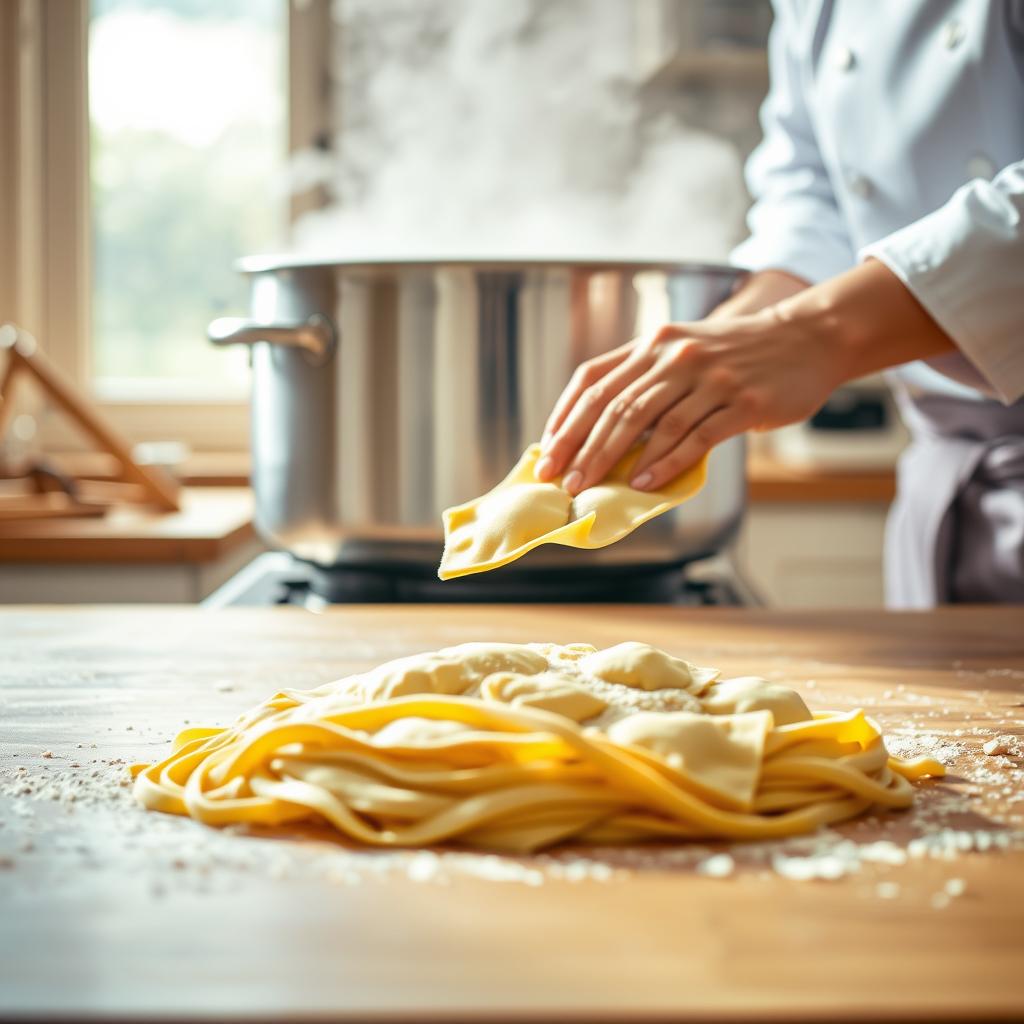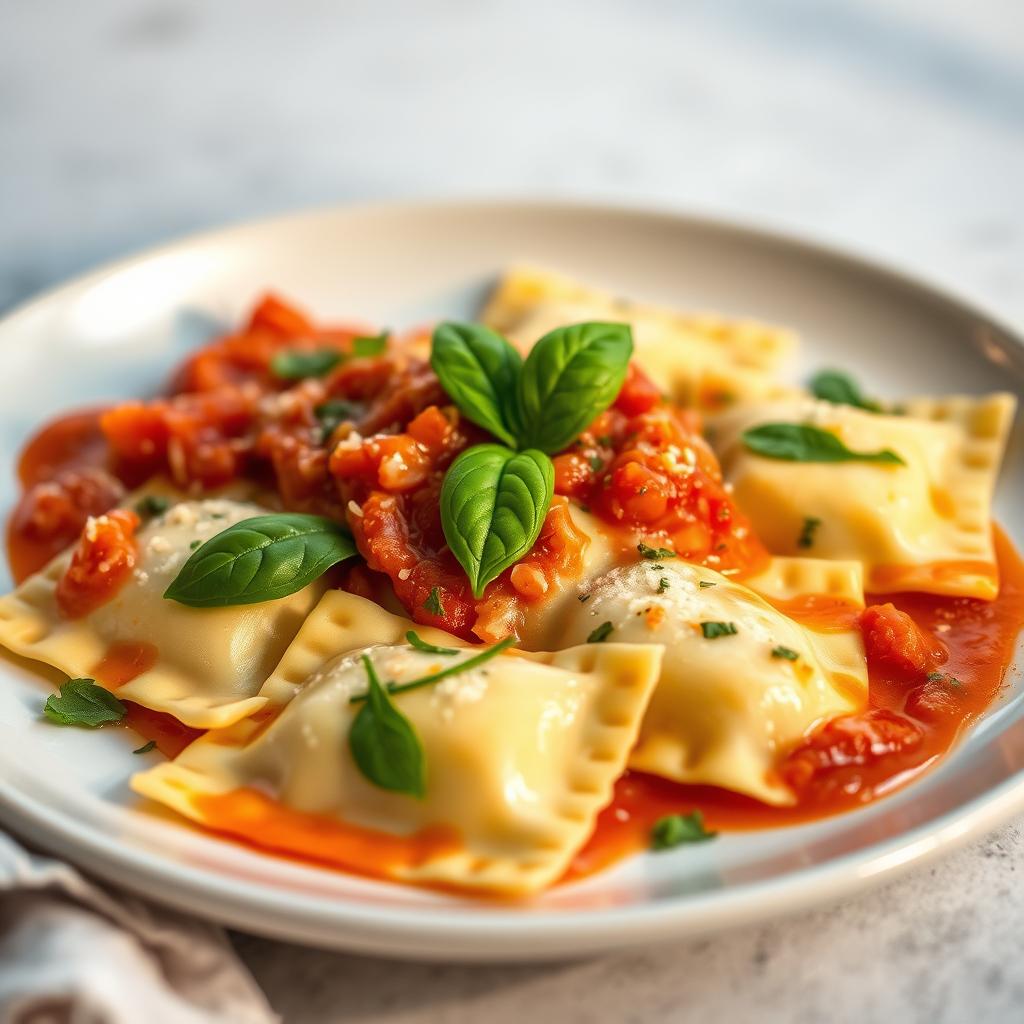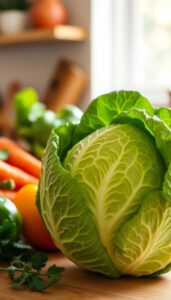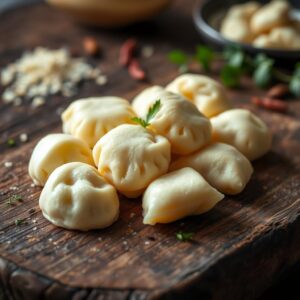vegan ravioli recipes give you a clear, simple plan to make stuffed pasta at home without eggs.
You’ll mix a basic dough of flour, salt, oil, and warm water, rest it, then roll it thin. Add a small spoon of filling, seal each piece, and boil in salted water until they float.
This approach keeps things affordable and flexible: choose tofu- or cashew-based fillings, mushroom-spinach mixes, and sauces from creamy to tomato-based.
The method is designed for beginners and scales easily — double a batch to refrigerate or freeze for quick meals that still taste fresh.
Why you’ll love it: ingredients are easy to find in U.S. stores, steps are repeatable, and you control flavor and texture.
Key Takeaways
- You can make reliable homemade pasta with a simple egg-free dough.
- Fillings like tofu ricotta, cashew ricotta, or mushroom-spinach offer variety.
- Cook ravioli 2–5 minutes until they float; pan-fry to add crisp edges.
- Recipe scales for meal prep — refrigerate 4–5 days or freeze for later.
- All ingredients are common in U.S. grocery stores and suit weeknight cooking.
Vegan Ravioli Recipes: Essential Ingredients and Prep
Start by gathering pantry staples—flour, a pinch of salt, a drizzle of olive oil, and warm water. Mix them in a bowl to form a workable dough. This simple base keeps the process friendly and low-cost.
Core ingredients and tools
Use all-purpose flour and the listed liquids. You only need a rolling pin, a cutter or pizza cutter, a fork, and a large pot for boiling. A lightly floured surface prevents sticking as you roll.
Mixing and resting the dough
Combine ingredients in a bowl, then knead until smooth. Whether you work by hand or with a food processor, aim for a silky pasta dough.
- Rest: Let the dough sit 30 minutes to relax gluten and improve elasticity.
- Seal: Keep a small bowl of warm water to moisten edges when you seal shapes.
- Prep: Mince any garlic and aromatics ahead so assembly runs quickly.
For a deeper technique guide, consult Serious Eats for fresh pasta tips and hydration cues: https://www.seriouseats.com/fresh-pasta-dough-recipe. Follow these quick steps and you’ll have a supple dough ready to shape and fill.
Step-by-Step: From Dough to Boiling Water in Minutes

Keep your workspace light and efficient. Work on a lightly floured surface and dust the rolling pin so sheets glide without tearing.
Roll the dough evenly until it is thin and translucent. Use a clean bowl of water nearby to wet edges when you seal pieces.
- Choose a shaping method: cookie cutter or stamp for neat pieces, or a pizza cutter and fork for rustic edges.
- Spoon small mounds of filling, leaving space between them; lightly brush water around filling so the top sheet bonds.
- Place the second sheet, press out air pockets, then use a cutter and fork to crimp edges firmly.
“Seal carefully — a little water goes a long way to prevent leaks.”
| Step | Action | Timing |
|---|---|---|
| Roll | Thin sheets on a floured surface | 5–7 minutes |
| Shape & Seal | Fill, dab water, press and crimp | 10–15 minutes per batch |
| Cook | Slide into salted boiling water in a large pot | 2–5 minutes until they float |
Bring a pot of salted water to a steady simmer. Gently add the filled pieces and watch the minutes closely — remove when they float to keep texture tender.
Time-saving tip: If you’re short on time, use pre-made wonton wrappers and follow the same assembly and cooking steps. Work in batches so the water stays hot and pieces don’t stick.
Vegan Ravioli Recipes: Fillings That Impress
Build layers of flavor in each parcel with these easy, make-ahead fillings. Each option focuses on balance: acid, fat, salt, and texture. Chill fillings briefly so they are easier to portion and seal.
Spinach-tofu “ricotta”
Saute onion, garlic, mushrooms, and spinach in olive oil. Pulse with crumbled tofu, tahini, nutritional yeast, lemon juice, basil, salt, and pepper in a food processor until creamy but scoopable.
Cashew-based ricotta
Soak raw cashews, then blend with water, lemon, sea salt, garlic, and onion powder until ultra-smooth. Add a little starch to thicken if needed for a rich, spreadable filling.
Mushroom and spinach (nut-free)
Cook down mushrooms and greens until most moisture evaporates, then pulse briefly in a processor. The result is hearty and easy to spoon.
- Add fresh basil or a pinch of turmeric for color.
- Mix in small amounts of plant cheese for extra creaminess.
- For soy nutrition summaries, see NutritionFacts.org (dofollow): https://nutritionfacts.org/topics/soy/
“Pulse just enough to unify—over-blending thins the texture.”
Sauces to Top Your Homemade Pasta Like a Pro

Choose one of three quick sauce paths to finish your dish so the filling and texture stay balanced. A well-made sauce will add shine, seasoning, and a final layer of aroma.
Creamy, fast: a silky white sauce
Make a speedy cream sauce by melting vegan butter and whisking in flour to form a roux. Stream in about 1 cup plant milk, then stir in a teaspoon of nutritional yeast, a pinch of nutmeg, and garlic powder until smooth.
Tomato-forward and herb bright
Keep a jarred marinara or a quick vodka sauce for weeknights; the acidity cuts through rich fillings. For a fresh note, blend a basil-forward pesto to add herb and oil brightness to spinach or nut fillings.
Light skillet finish
Warm olive oil with minced garlic, deglaze with a splash of white wine, then add lemon juice and basil. Toss gently so the pasta stays intact and the sauce clings rather than pools.
- Use a teaspoon of nutritional yeast in cream sauces for a cheese-like umami lift.
- Warm sauces before you top the pasta and taste for salt at the end.
“Toss gently—coating helps the sauce cling without breaking the parcels.”
Serving, Storage, and Reheating Tips for Busy Weeknights
Finish your meal smartly by plating while the pasta is hot and simple garnishes make a big difference.
Plate and garnish: Serve cooked ravioli hot. Top with grated plant parmesan, a pinch of red pepper flakes, and torn fresh basil for aroma and color. A light drizzle of olive oil or a spoonful of warm sauce lifts the plate.
Storage
Cool ravioli completely before storing. Place them in an airtight container and refrigerate up to 4–5 days. Keep the sauce separate to protect texture and prevent soggy dough.
Reheating
For best results, reheat in a skillet with a little oil or plant butter for a few minutes until warm and lightly crisp at the edges.
If you use a microwave, add a few drops of water, cover loosely, and heat in short bursts. Make sure not to overheat so seams stay intact.
Food safety
“Plan ahead and store safely to avoid waste.”
For official storage timelines and safety tips, consult FoodSafety.gov’s food storage charts (dofollow): https://www.foodsafety.gov/food-safety-charts/food-storage-charts
- Batch cook extra dough and filling to save time on weeknights.
- When boiling fresh or chilled, use a large pot of well-salted water and cook just until pieces float to avoid over-softening; adjust minutes slightly if cooking from frozen.
Conclusion
Make this your go-to method, and you’ll see how approachable homemade pasta can be. Bring together a four-ingredient dough, roll on a lightly floured surface, spoon in a flavorful filling, and cook just a few minutes until pieces float.
Keep staples—flour, salt, a bit of oil, and water—on hand so you can assemble ravioli any night. Use a rolling pin, a simple cutter, a bowl, or a food processor to speed prep.
Tip: Seal edges well around filling, warm your sauce, and garnish with fresh basil and a squeeze of lemon juice. Store cooked portions in the fridge up to 4–5 days.
Reference links and dofollow resources in this guide give extra technique details so you can repeat the process with confidence and improve over time.




